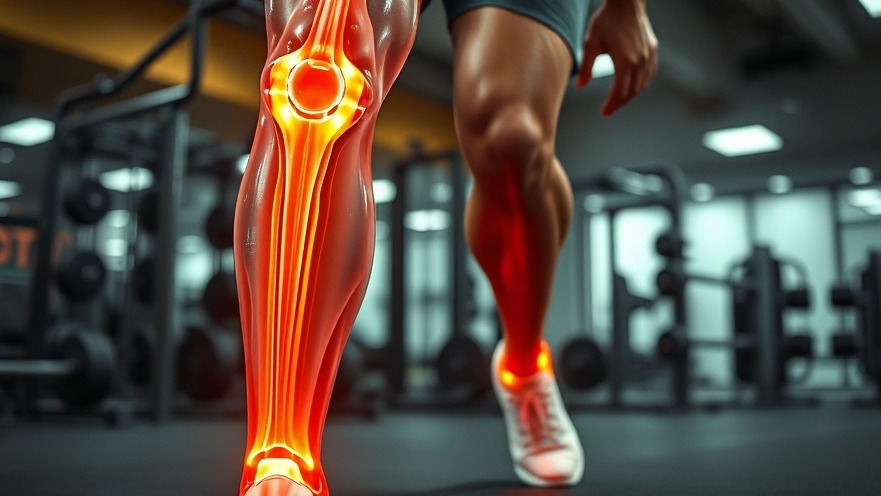
In a fitness culture obsessed with personal records, extreme challenges, and pushing limits, we often overlook what might be the most crucial aspect of exercise: protecting our joints. While social media celebrates those who run the fastest marathons or lift the heaviest weights, there's a quieter triumph happening among those who reach their senior years with pain-free movement. Perhaps it's time we reconsidered what fitness success really means.
The Middle Path: Neither Rust Nor Wear
Dr. Stuart McGill, a renowned expert on back mechanics and joint health, puts it perfectly: "The idea is neither to rust nor to wear out." This elegantly simple philosophy captures the essence of sustainable fitness. Our bodies require movement and stress to remain healthy—without it, we deteriorate. Yet excessive stress leads to breakdown, injury, and often permanent damage.
This middle path isn't as glamorous as pushing boundaries, but it offers something far more valuable: the ability to remain active throughout your entire life.
Understanding Your Body's Tipping Point
Everyone has what McGill calls a "stress tipping point." Exercise up to this point stimulates positive adaptation, building stronger muscles, bones, and connective tissues. Beyond this threshold, however, micro-injuries accumulate faster than the body can repair them, eventually manifesting as chronic pain, stress fractures, and tendon injuries that can persist for years or even decades.
What makes joint health particularly challenging is that your tipping point depends on multiple factors:
1. Genetic Predisposition
The body type you were born with—whether you have thick bones or a slender frame—significantly influences how much load your joints can handle. What builds resilient bone in one person might cause micro-fractures in another.
2. Movement Patterns
How you move matters more than how much you move. Poor biomechanics during exercise places disproportionate stress on vulnerable joint structures, whereas proper form distributes force more evenly.
3. Recovery Capacity
Your body's ability to repair itself between workouts varies based on age, nutrition, sleep quality, and overall stress levels. What might be an appropriate training load during a period of low stress and good sleep could cross your tipping point during more challenging life phases.
4. Training History
Joints adapt to stress gradually over time. Someone with years of consistent training has likely developed more resilient connective tissues than someone new to exercise, even if both individuals appear equally fit.
Weight Training for Joint Longevity
The current fitness culture often encourages lifting heavier weights as the primary measure of progress. But McGill suggests asking yourself a fundamental question: "Why lift more than you need to? Why gain more strength than is required for your goals?"
This doesn't mean avoiding challenging workouts. Rather, it means being strategic about the stress you place on your joints. Here are key principles for joint-friendly strength training:
Focus on Core Endurance, Not Just Strength
McGill's research with industrial workers revealed something counterintuitive: those with exceptional core endurance—not necessarily those with the strongest backs—had fewer disabling injuries. These workers maintained proper form throughout their shifts, while stronger but less endurable colleagues broke form when fatigued, leading to injury.
This suggests prioritizing exercise protocols that build not just maximum strength but movement quality under fatigue. Can you maintain perfect form on your tenth set as well as your first? This capability may be more important for joint health than how much weight you can lift once.
Train Movements, Not Just Muscles
Joint-friendly exercise focuses on coordinated movement patterns rather than isolated muscle groups. This approach distributes stress across multiple joints and muscles, preventing excessive wear on any single structure.
Prioritize Technique Over Load
Before increasing weight, ensure your movement pattern is biomechanically sound. Video recording your lifts can provide valuable feedback on form breakdowns that might not be apparent during the exercise itself.
Running for Lifelong Mobility
Many fitness enthusiasts worry that running, particularly on hard surfaces, will inevitably damage their knees and hips. However, research and expert opinion suggest it's not how far you run but how you run that determines joint impact.
Running coach Shane Benzie, who has studied elite runners worldwide, emphasizes that running technique can either protect or harm your joints. With each stride, approximately 2.5 times your body weight returns as impact force. How your body absorbs and distributes this force determines whether running builds or breaks down your joints.
The Problem with Heel Striking
Benzie's analysis of over 4,000 runners found that 84% heel strike with a straight leg—landing on the single point of the heel while the leg is fully extended. This technique concentrates impact force on a small area rather than allowing the foot's natural shock-absorbing mechanisms to distribute the load.
Landing Mechanics Matter
A more joint-friendly approach involves landing with a slightly bent knee and a more midfoot strike, allowing the foot's arch and muscles to act as natural shock absorbers. This doesn't mean adopting an exaggerated forefoot running style, but rather avoiding the jarring impact of a locked-knee heel strike.
Running as a Skill
We often think of running as natural and instinctive, but efficient, joint-protective running is a skill that must be learned and practiced. Benzie recommends recording your running form to identify areas for improvement, then consciously retraining your movement patterns.
Building a Joint-Preservation Mindset
Perhaps the most important factor in protecting your joints isn't any specific exercise technique but your overall approach to fitness. Here are principles to guide your training:
1. Value Consistency Over Intensity
A moderate workout you can perform regularly for decades will yield better long-term results than extreme sessions that lead to injury and forced rest periods.
2. Listen to Your Body's Signals
Sharp pain during exercise is never normal. Distinguish between the productive discomfort of challenging work and the warning signs of potential injury.
3. Embrace Variety
Different movement patterns distribute stress across various joints and tissues. Cross-training not only prevents overuse injuries but builds more comprehensive fitness.
4. Measure Progress Differently
Instead of focusing solely on weight lifted or distance covered, consider tracking movement quality, recovery capacity, and how you feel during daily activities.
5. Think Long-Term
Ask yourself: "Will this training approach still serve me in 20 years?" If the answer is no, it may be time to reconsider your definition of fitness success.
The Ultimate Measure of Fitness Success
Perhaps the true fitness champions aren't those with the most impressive personal records but those who maintain active, pain-free movement throughout their lives. The ability to climb stairs easily at 70, play with grandchildren at 80, or enjoy a recreational hike at 90 represents a fitness achievement far more valuable than any trophy or social media accolade.
By prioritizing joint health today, you're not just investing in your current fitness—you're securing your ability to enjoy movement for decades to come. And in a fitness journey measured in years rather than reps, that might be the most important personal record of all.
 Add Row
Add Row  Add
Add 




Write A Comment